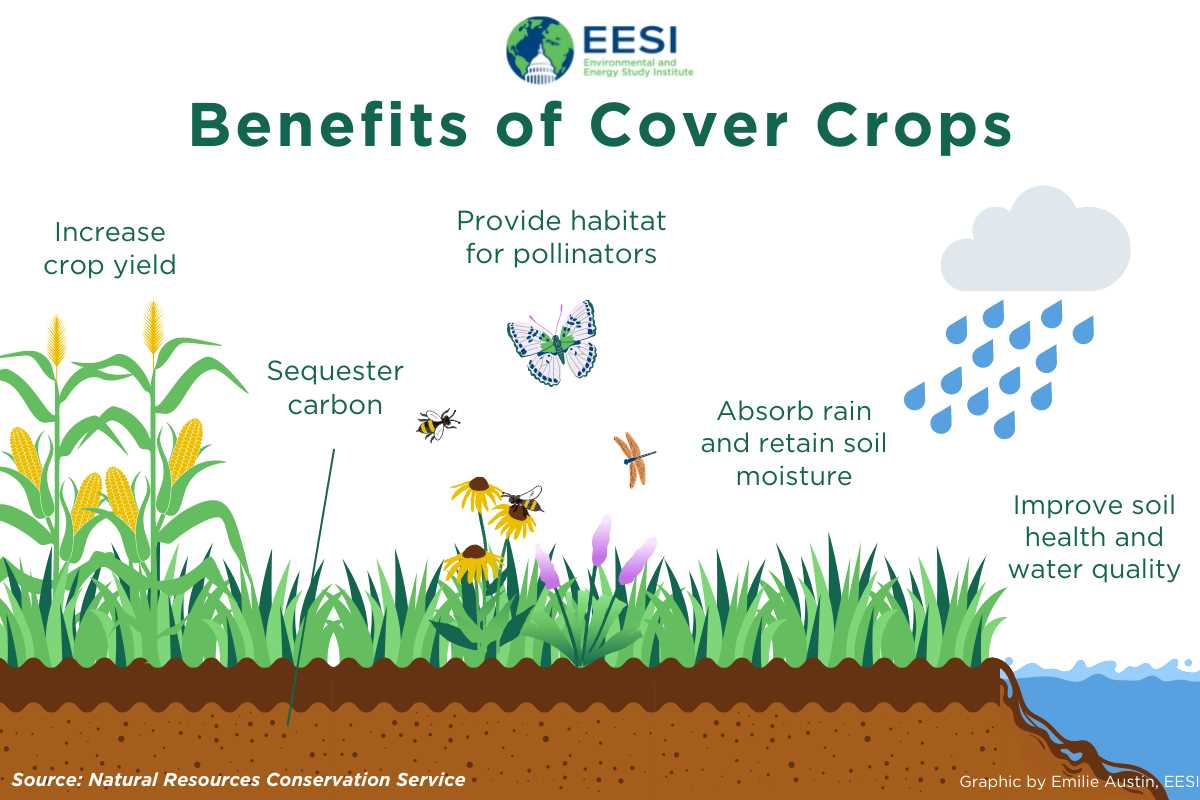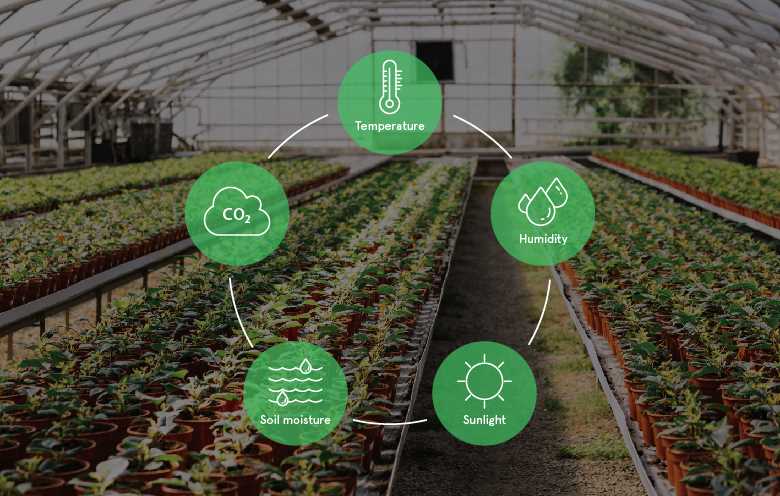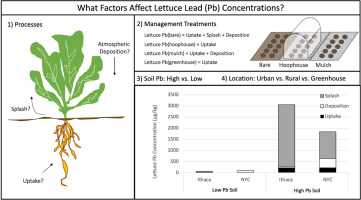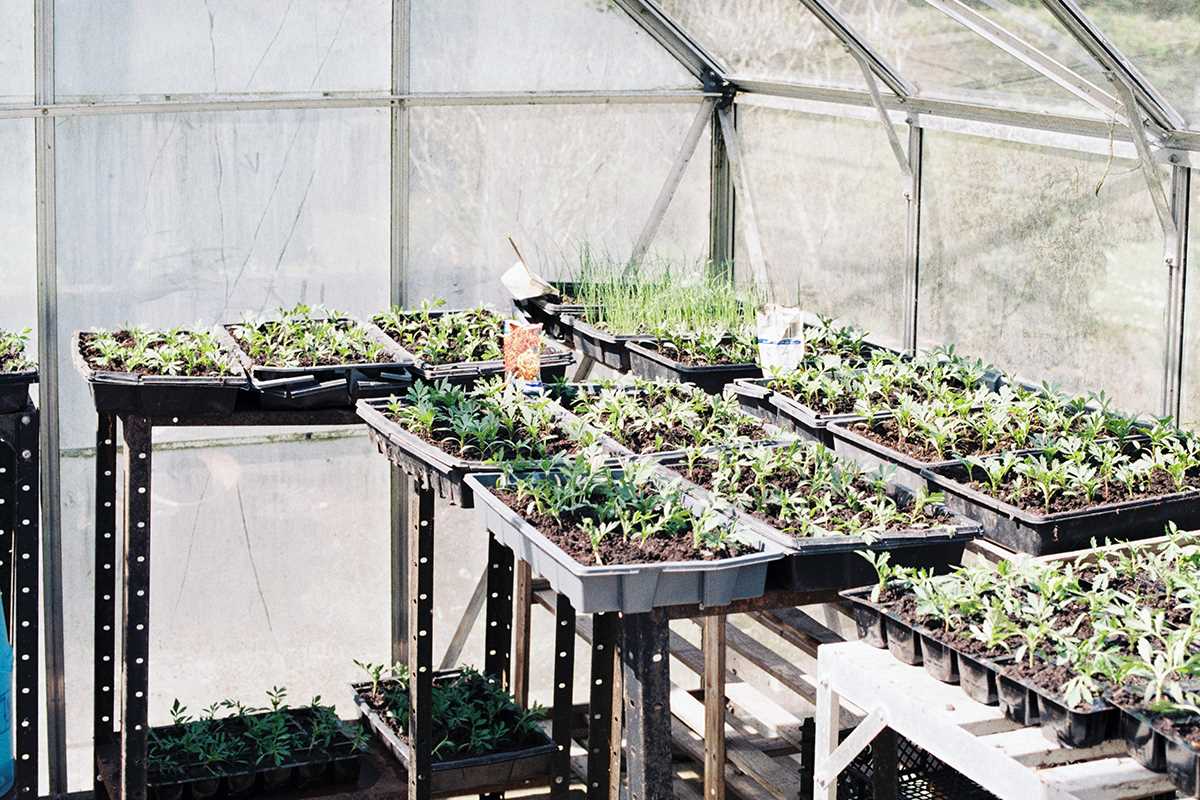- Benefits of Sideration in Greenhouse Soil Health
- 1. Soil Structure Improvement
- 2. Nutrient Cycling
- 3. Weed Suppression
- 4. Disease and Pest Control
- 5. Organic Matter Enrichment
- Improving Soil Structure and Texture with Sideration
- Benefits of Improved Soil Structure
- Benefits of Improved Soil Texture
- Nutrient Cycling and Soil Fertility Enhancement through Sideration
- Weed Suppression and Pest Control with Aster Crops
- Weed Suppression
- Pest Control
- Enhanced Biological Control
- Conclusion
- Sideration as a Natural Soil Disease Suppression Method
- Benefits of Sideration for Disease Suppression
- Best Practices for Implementing Sideration
- Conclusion
- Water and Moisture Management Benefits of Sideration
- 1. Increased Water Infiltration
- 2. Enhanced Soil Water Holding Capacity
- 3. Reduction in Evaporation
- 4. Improved Water Drainage
- 5. Weed Competition and Water Competition
- Sideration and Sustainable Agriculture Practices
- Benefits of Sideration in Sustainable Agriculture
- Sideration Techniques
- Conclusion
- “Question-Answer”
- What is sideration?
- Why is sideration important for greenhouse soil health?
- What are some examples of aster crops that can be used for sideration?
- How long should the sideration period be for optimal soil health?
- What are some other benefits of sideration?
- “Video” Okra Harvest and Vetiver in the Wannabe Food Forest
Greenhouse farming has become increasingly popular in recent years due to its numerous benefits, including year-round production and protection against adverse weather conditions. However, intensive agricultural practices in greenhouses can deplete the soil of essential nutrients, leading to decreased crop yield and quality over time. As a result, farmers are constantly searching for sustainable and environmentally friendly methods to enhance soil health and fertility.
One such method that has gained attention is sideration with aster crops. Sideration, also known as cover cropping, involves the planting of non-commercial crops during fallow periods to improve soil structure and nutrient content. Aster crops, which include plants like sunflowers and marigolds, have proven to be particularly effective in this regard.
There are several reasons why aster crops are beneficial for greenhouse soil health. Firstly, they have deep root systems that help break up compacted soil, allowing for better water infiltration and root penetration. This helps improve soil aeration and drainage, reducing the risk of waterlogging and root diseases. Secondly, aster crops have the ability to extract and accumulate nutrients from the soil, effectively recycling and re-distributing them for future use by commercial crops. Lastly, these plants attract beneficial insects, such as pollinators and predators of pests, which contribute to a more balanced ecosystem within the greenhouse.
In conclusion, sideration with aster crops provides greenhouse farmers with a sustainable and effective method to enhance soil health and fertility. By incorporating these non-commercial crops into their farming practices, farmers can improve soil structure, nutrient content, and overall crop production. Additionally, sideration with aster crops promotes ecological balance and reduces the need for synthetic fertilizers and pesticides. As the demand for organic and sustainable farming practices continues to rise, sideration with aster crops offers a promising solution for greenhouse farmers.
Benefits of Sideration in Greenhouse Soil Health
Sideration, or the practice of growing cover crops within the greenhouse during fallow periods, has been increasingly recognized as an effective method to enhance soil health in greenhouse agriculture. This practice involves planting certain crops, known as siderates or green manures, which have specific attributes that contribute to soil improvement.
1. Soil Structure Improvement
Sideration helps promote soil structure improvement by enhancing soil aggregation. When cover crops are grown and then incorporated into the soil, their root systems create channels and pores, facilitating the movement of air, water, and nutrients. This improves water infiltration and reduces the risk of soil compaction, allowing the roots of subsequent crops to penetrate deeper and access nutrients more easily.
2. Nutrient Cycling
One of the key benefits of sideration is its ability to enhance nutrient cycling in the greenhouse soil. Siderate crops have the ability to accumulate and store nutrients, especially nitrogen, from the air and soil. When these cover crops are incorporated into the soil, the nutrients are released and become available to subsequent crops. This reduces the need for synthetic fertilizers, leading to cost savings and minimizing environmental impacts.
3. Weed Suppression

Sideration has been found to be effective in suppressing weed growth within the greenhouse. The dense root systems and foliage of cover crops create a physical barrier that competes with weeds for resources such as sunlight, water, and nutrients. This can help reduce weed populations and minimize the need for herbicides, promoting more sustainable and environmentally friendly greenhouse practices.
4. Disease and Pest Control

Certain cover crops used in sideration have been shown to have allelopathic effects on pathogens and pests. Their root exudates release compounds that inhibit the growth and development of harmful organisms, reducing the risk of diseases and pests in the greenhouse. This can result in improved crop health and reduced reliance on chemical pesticides.
5. Organic Matter Enrichment
Continuous sideration practices contribute to the enrichment of organic matter in greenhouse soil. The incorporation of cover crops adds organic material that decomposes over time, increasing soil carbon content and improving its water-holding capacity and nutrient-retention properties. This leads to better overall soil fertility, microbial activity, and long-term sustainability of greenhouse agriculture.
In conclusion, sideration plays a crucial role in maintaining and improving greenhouse soil health. By improving soil structure, enhancing nutrient cycling, suppressing weeds, controlling diseases and pests, and enriching organic matter, the practice of sideration offers numerous benefits for sustainable greenhouse agriculture. Implementing siderate crops in the greenhouse rotation system can lead to healthier soils, improved crop yields, and reduced environmental impacts.
Improving Soil Structure and Texture with Sideration
Sideration, or the practice of growing cover crops in between main crops, has been proven to be an effective method for enhancing greenhouse soil health. One of the key benefits of sideration is its ability to improve soil structure and texture.
Benefits of Improved Soil Structure

Improved soil structure is essential for healthy plant growth as it promotes better root development, nutrient uptake, and water retention. Sideration can help achieve improved soil structure in the following ways:
- Increased organic matter: Cover crops, such as legumes and grasses, add organic matter to the soil through their root systems and above-ground biomass. This organic matter improves soil aggregation and stability.
- Enhanced soil microbial activity: The roots and residues of cover crops provide a food source for soil microorganisms. These microorganisms break down organic matter, releasing nutrients and improving soil structure.
- Reduced soil compaction: Cover crops help prevent soil compaction by protecting the soil surface from erosion and providing a barrier against heavy machinery. This allows for better water infiltration and root penetration.
Benefits of Improved Soil Texture
Soil texture refers to the relative proportions of sand, silt, and clay in the soil. Each soil texture has different water-holding and nutrient-retaining capacities. Sideration can contribute to improved soil texture in the following ways:
- Increased soil organic matter: The organic matter added by cover crops improves soil structure, which in turn improves soil texture. Organic matter helps bind soil particles together and improves water and nutrient holding capacity.
- Enhanced soil aggregation: Soil aggregation is the clumping of soil particles into larger, more stable aggregates. This helps create a more porous soil structure and improves drainage and aeration.
- Reduced erosion: Cover crops protect the soil surface from erosion caused by wind and water. This helps prevent soil particles from being washed away and maintains a more stable soil texture.
By incorporating sideration into greenhouse cropping systems, growers can improve soil structure and texture, leading to healthier plants and increased crop productivity.
Nutrient Cycling and Soil Fertility Enhancement through Sideration

Sideration, the process of growing cover crops alongside main cash crops, is an effective method to enhance greenhouse soil health and improve overall soil fertility. Nutrient cycling plays a significant role in this process, as cover crops act as living mulch, incorporating and cycling nutrients throughout the soil profile.
One important aspect of nutrient cycling through sideration is the ability of cover crops to fix atmospheric nitrogen. Leguminous cover crops, such as clover or vetch, have the ability to form a symbiotic relationship with nitrogen-fixing bacteria in their root nodules. This symbiosis allows these cover crops to convert nitrogen gas from the atmosphere into plant-available forms, thereby enriching the soil with nitrogen.
Furthermore, cover crops also aid in the recycling of other essential nutrients. As cover crops grow, they take up nutrients from the soil, including nitrogen, phosphorus, and potassium. When these cover crops are terminated and incorporated back into the soil, they release these nutrients, making them available for the subsequent cash crop. This process of nutrient recycling helps maintain a balanced nutrient supply and reduces the need for synthetic fertilizers.
In addition to nutrient cycling, sideration also improves soil structure and organic matter content. The dense root systems of cover crops help to hold the soil together, preventing erosion and improving water infiltration. As cover crops decompose, they contribute organic matter to the soil, increasing its ability to hold water and nutrients. This organic matter also supports the growth of beneficial soil microorganisms, which further contribute to nutrient cycling and soil fertility.
Overall, sideration with cover crops is a valuable practice for greenhouse soil health. By promoting nutrient cycling and enhancing soil fertility, sideration improves the long-term sustainability and productivity of greenhouse farming systems. Proper selection and management of cover crops can optimize nutrient cycling and maximize the benefits to greenhouse soil health.
Weed Suppression and Pest Control with Aster Crops
Aster crops have been found to be an effective method for weed suppression and pest control in greenhouse soil. This practice not only helps in maintaining the health of the greenhouse soil but also reduces the need for chemical pesticides and herbicides.
Weed Suppression
Aster crops, such as marigold and cosmos, have dense foliage that can effectively suppress the growth of weeds in greenhouse soil. The thick canopy created by these crops shades out the weed seeds, preventing them from germinating and competing for resources such as sunlight, water, and nutrients.
- Marigold plants, in particular, produce allelopathic compounds that inhibit the growth of certain weed species.
- Their strong root systems also help in loosening and aerating the soil, making it difficult for weed roots to establish and grow.
Pest Control
Aster crops can also assist in pest control in greenhouse settings. They act as trap crops, attracting pests away from the main vegetable or flower crops that are typically grown in greenhouses.
- The presence of aster crops diverts pests, such as aphids and whiteflies, onto the foliage of these crops, reducing their population on the main crops.
- Aster crops can also act as sacrificial plants, providing a target for pests to infest and reducing the overall damage on the main crops.
Enhanced Biological Control

By attracting pests, aster crops also attract beneficial insects, such as ladybugs and lacewings, which are natural predators of many common greenhouse pests.
- These beneficial insects feed on the pests infesting the aster crops and can help control their population.
- Once the pest population is reduced, the beneficial insects can then move on to the main crops and provide pest control there.
Conclusion
Utilizing aster crops in greenhouse systems provides multiple benefits for weed suppression and pest control. This natural approach helps maintain soil health, reduces the need for chemical interventions, and promotes the presence of beneficial insects. Consider incorporating aster crops into your greenhouse rotation to optimize your crop production and sustainability.
Sideration as a Natural Soil Disease Suppression Method
Sideration, the practice of growing cover crops in between cash crop cycles, has been proven to be an effective natural method for suppressing soil-borne diseases in greenhouse production systems. By utilizing this technique, greenhouse growers can enhance soil health, reduce chemical inputs, and increase crop productivity.
Benefits of Sideration for Disease Suppression
1. Biological Control:
Sideration promotes the growth of beneficial microorganisms, such as mycorrhizal fungi and rhizobacteria, which can suppress soil-borne pathogens. These beneficial microbes help build a competitive environment for pathogens, preventing them from establishing and multiplying in the soil.
2. Increased Soil Biodiversity:
The diverse range of cover crops used during sideration increases the abundance and diversity of soil microorganisms. This enhanced biodiversity creates a more resilient soil ecosystem that is better equipped to suppress disease-causing organisms.
3. Weed Suppression:
Cover crops planted during sideration can help to suppress weed growth in greenhouses. Weeds can serve as hosts for soil-borne diseases, acting as a reservoir for pathogens. By suppressing weed growth, cover crops indirectly reduce disease pressure in the soil.
Best Practices for Implementing Sideration
1. Crop Rotation:
Implement a crop rotation system that includes cover crops in between cash crop cycles. This rotation allows for the incorporation of different cover crops with varied benefits for disease suppression and soil health improvement.
2. Proper Timing:
Choose cover crops that have a quick growth cycle and can be easily incorporated into the soil before planting the next cash crop. This ensures that the cover crops are able to effectively suppress diseases and provide maximum benefits to the soil.
3. Selecting Disease-Resistant Cover Crops:
Choose cover crops that have proven resistance to common soil-borne pathogens in your region. Selecting disease-resistant cover crops will further enhance the ability to suppress diseases and maintain a healthy soil ecosystem.
Conclusion
Sideration, the practice of growing cover crops in between cash crop cycles, offers a natural and effective method for suppressing soil-borne diseases in greenhouse production systems. By implementing sideration, growers can harness the benefits of biological control, increase soil biodiversity, and suppress weeds, creating a healthier and more productive soil environment for their crops. Incorporating sideration into greenhouse production practices can reduce reliance on chemicals and contribute to sustainable and environmentally friendly agriculture.
Water and Moisture Management Benefits of Sideration
Sideration refers to the practice of growing cover crops in between main cash crops to enhance soil health and productivity. In addition to nutrient cycling and weed suppression benefits, sideration can also improve water and moisture management in greenhouse soil.
1. Increased Water Infiltration
By cultivating cover crops during the fallow period, the roots of these plants help create pathways for water penetration into the soil. The roots can break up compacted layers and improve soil structure, allowing water to penetrate more easily and reducing the risks of surface runoff and erosion.
2. Enhanced Soil Water Holding Capacity
Sideration practices, such as growing leguminous cover crops, can increase the soil’s organic matter content. This, in turn, improves the soil’s water holding capacity. Organic matter acts like a sponge, absorbing and retaining moisture, ensuring that plants have access to water even during dry periods. It also reduces the need for frequent irrigation, helping conserve water resources.
3. Reduction in Evaporation
When the soil surface is covered with a thick cover crop layer, it acts as a natural mulch, reducing evaporation and water loss from the soil surface. The cover crop canopy shades the soil, preventing direct sunlight from heating the soil and causing excessive evaporation. This protective layer helps conserve soil moisture, reducing the need for irrigation and improving water use efficiency.
4. Improved Water Drainage
Some cover crops have deep-rooting systems that can penetrate through compacted soil layers, improving soil structure and drainage. This allows excess water to drain more efficiently, preventing waterlogging and reducing the risks of root diseases caused by poor drainage. Better water drainage enhances oxygen availability in the root zone, promoting healthier root growth and overall plant growth.
5. Weed Competition and Water Competition
Another water management benefit of sideration is the competition it creates with weeds for water resources. By establishing a dense cover crop canopy, weed growth is suppressed, reducing the competition for water and nutrients. This ensures that the cash crops have access to a greater share of available water, leading to improved water use efficiency and better crop yield.
In conclusion, sideration practices offer several water and moisture management benefits in greenhouse soil. By promoting increased water infiltration, enhancing soil water holding capacity, reducing evaporation, improving water drainage, and minimizing weed competition, growers can optimize water resources and improve the overall health and productivity of their greenhouse crops.
Sideration and Sustainable Agriculture Practices
Sideration is an important technique in sustainable agriculture practices. It involves the cultivation of cover crops, known as siderates, that are purposely grown to improve soil health and fertility. These cover crops play a vital role in enhancing the productivity and sustainability of agricultural lands.
Benefits of Sideration in Sustainable Agriculture
Sideration offers numerous benefits to sustainable agriculture practices:
- Soil Fertility: Siderates help in fixing nitrogen, a vital nutrient for plant growth, in the soil. This leads to increased fertility and improved nutrient availability for subsequent crops.
- Soil Erosion Prevention: The extensive root system of siderates helps in binding the soil particles, preventing erosion caused by wind and water. Sideration is particularly effective in sloping fields where erosion is a major concern.
- Weed Suppression: Siderates compete with weeds for resources such as sunlight, water, and nutrients. They can act as a natural weed suppressor, reducing the need for chemical herbicides.
- Enhanced Water Retention: The dense root system of siderates improves the soil’s ability to retain water, reducing the risk of water runoff and allowing for better water infiltration.
- Carbon Sequestration: Siderates absorb carbon dioxide from the atmosphere and store it in the soil in the form of organic matter. This helps in mitigating climate change by reducing greenhouse gas emissions.
Sideration Techniques

There are various techniques used in sideration, depending on the specific goals and conditions of the agricultural system:
- Cover Cropping: Growing cover crops during fallow periods or between cash crops helps in providing continuous soil cover and nutrients. Common cover crop species include legumes, grasses, and brassicas.
- Intercropping: Intercropping refers to the practice of growing two or more crops simultaneously in the same field. This helps in maximizing resource utilization, pest control, and crop diversity.
- Green Manuring: Green manuring involves incorporating the biomass of siderates into the soil. This adds organic matter, improves soil structure, and enhances nutrient availability for subsequent crops.
- Strip Cropping: Strip cropping alternates rows of cash crops with rows of cover crops. This technique helps in minimizing erosion, improving water infiltration, and providing habitat for beneficial insects.
Conclusion
Sideration plays a crucial role in sustainable agriculture practices by enhancing soil health, preventing erosion, suppressing weeds, improving water retention, and sequestering carbon. Implementing sideration techniques, such as cover cropping, intercropping, green manuring, and strip cropping, can lead to more productive and environmentally friendly agricultural systems.
“Question-Answer”
What is sideration?
Sideration refers to the practice of growing cover crops alongside main crops, such as aster crops, in order to improve soil health.
Why is sideration important for greenhouse soil health?
Sideration is important for greenhouse soil health because it helps prevent nutrient depletion, suppresses weeds, improves soil structure, and increases beneficial soil microorganisms.
What are some examples of aster crops that can be used for sideration?
Some examples of aster crops that can be used for sideration include marigold, sunflower, zinnia, and chrysanthemum.
How long should the sideration period be for optimal soil health?
The length of the sideration period can vary depending on the specific crops and the condition of the soil, but it is generally recommended to have a sideration period of 4 to 8 weeks.
What are some other benefits of sideration?
In addition to improving soil health, sideration can also help reduce soil erosion, conserve water, and attract beneficial insects for natural pest control.







